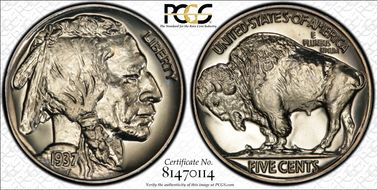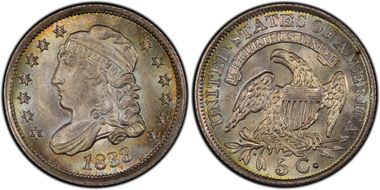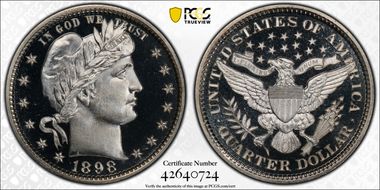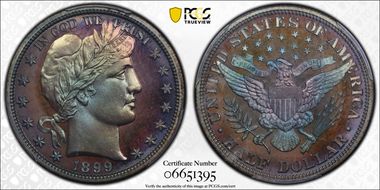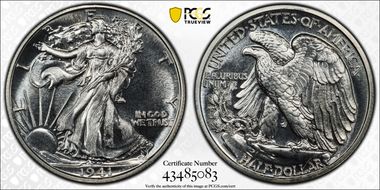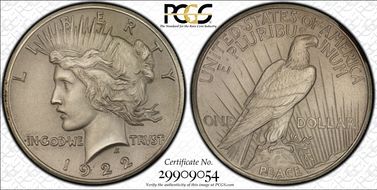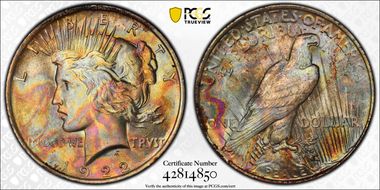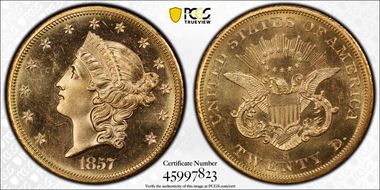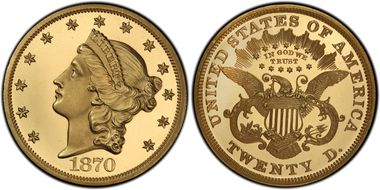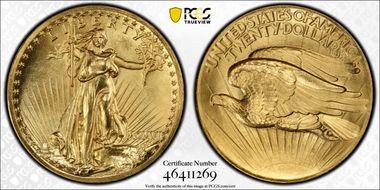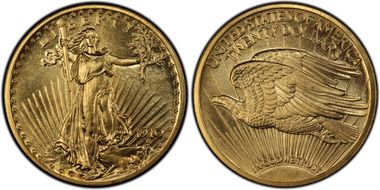Duke Collection Complete U.S. Type Set- CAC 的钱币相册
Ex- Raymond T. Baker, Director of the United States Mint, 1917 to 1922. Owned by Baker from the time it was struck, handed down through his family and friends until being sold in 2014. Bob R. Simpson Collection. Single finest known. CAC Finest known, of 8 graded by PCGS. Mintage perhaps 10-12? The original mintage is unknown- since it was not a regular issue, the Mint did not keep records on the number struck. Undoubtedly very few were made, the coins being intended solely for distribution to influential politicians, Mint and Treasury Department officials, and others intimately involved in the creation and evolution of the Peace dollar design. The coins were not made available to the general public. Per Stacks Bowers auctions: “All Proof 1922 high relief Peace dollars were produced in the same manner, struck… on the Mint's medal press to bring up even the most intricate elements of the design. Once struck the coins were sandblasted in the Mint, this type of finish being popular at the time in production of high quality medallic and coinage works of art. These coins are often referred to as "Matte Proofs," or being of a "matte finish," although they are more accurately described as Sand Blast Proofs in keeping with the method of manufacture.”
From the S.S. Central America, one of 123 Double Eagles found in the San Francisco Mint Box. This is the highest graded PCGS prooflike Liberty $20 for the entire series (1849-1907). CAC
John H. Clapp Collection- Louis E. Eliasberg, Sr. Collection- Ed Trompeter Collection- Tacasyl Collection. CAC
Captain Andrew North Saint-Gaudens Gold Set, possibly from the personal collection of Chief Engraver Charles Edward Barber- Harry W. Bass, Jr. Collection. One of only two High Reliefs designated as Specimens (SP) by PCGS. CAC This coin's proof pedigree traces back to the legendary Captain Andrew North Saint-Gaudens gold set, which, according to the research of Burdette, possibly originated from the personal collection of Chief Engraver, Charles Edward Barber. The set has been heralded as "the rarest set of gold coins in the world," and won the blue ribbon for "Excellency of Exhibit" when it was displayed by Stack's at the 1956 ANA convention in Chicago. It consisted of seven double eagles, including two Ultra High Reliefs, and four eagles, all in simply remarkable condition and encased in a custom-made leather box. The set remained intact, housed in private collections, until NERCG purchased it in April 1980 for $1 million and distributed the pieces to various collectors. The High Relief Wire Edge proof, as well as its proof Flat Edge counterpart, was purchased from NERCG by Harry W. Bass, Jr. at the New York Metropolitan coin show that same month, and remained in that famous collection until Bowers and Merena auctioned it in November 2000.




















